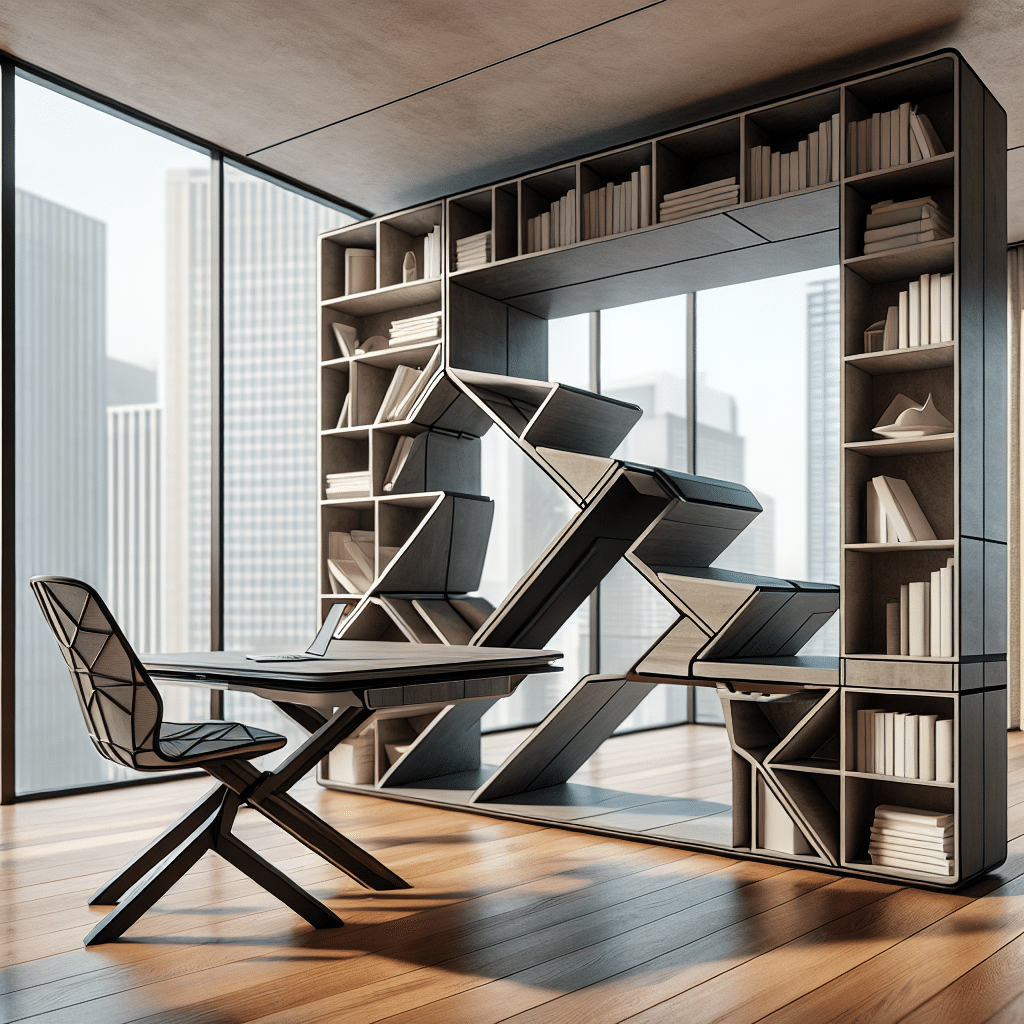Understanding Transformable Furniture for Dynamic Spaces
The Concept of Transformable Furniture
Transformable furniture, often referred to as multifunctional or versatile furniture, is designed to adapt to various needs and functions within a space. As urban living conditions become increasingly compact, the demand for innovative furnishings that can maximize limited square footage has surged. Transformable furniture allows rooms to serve multiple purposes, enhancing both functionality and aesthetics.
Advantages of Transformable Furniture
-
Space-Saving Solutions: The primary advantage of transformable furniture is its ability to save space. Items such as foldable tables, extendable beds, and retractable sofas can help optimize living areas, making them ideal for small apartments or multi-use spaces.
-
Cost-Effective: Investing in transformable furniture can often replace multiple traditional furniture items, resulting in significant savings. The multifunctionality of such pieces eliminates the need for additional purchases, making them an economical choice.
-
Flexibility and Adaptability: Transformable furniture provides the flexibility needed for modern living. A modular sofa can be rearranged to accommodate guests, while a desk can transform into a dining table, adapting to various situations effortlessly.
-
Aesthetic Appeal: Contemporary designs of transformable furniture often prioritize sleek lines and minimalism, aligning with modern interior design trends. This makes them not only functional but also visually appealing additions to any space.
-
Sustainability: With a growing focus on sustainable living, transformable furniture presents an eco-friendly alternative. Its durability and multiple uses mean less waste and fewer resources used for production.
Popular Types of Transformable Furniture
1. Murphy Beds
Murphy beds, also known as wall beds, are a classic example of transformable furniture. They can be folded up against a wall when not in use, freeing up floor space. Modern designs often come with additional storage options, such as shelving or cabinets, making them versatile for studios or small bedrooms.
2. Sofa Beds
Sofa beds combine a couch’s comfort with a bed’s functionality, making them perfect for living rooms that double as guest rooms. Innovative designs include pull-out mechanisms and hidden mattresses that provide a seamless transition from seating to sleeping.
3. Extendable Dining Tables
Extendable dining tables offer the flexibility to host intimate dinners or larger gatherings without needing separate tables for different occasions. When not in use, they can be compact, fitting snugly into smaller dining areas.
4. Folding Desks
Folding desks are ideal for remote workers or students in small spaces. They can be easily stored away or expanded when work needs to be done. Some designs even incorporate storage solutions for supplies, maintaining an organized workspace.
5. Nesting Tables
Nesting tables are designed to be compact and stackable, providing additional surface area when needed but easily tucked away when not in use. This adaptability is perfect for entertaining or small living areas.
6. Ottoman Storage
Ottoman storage serves dual purposes as both a seating option and a storage unit. Perfect for living rooms or bedrooms, these pieces can store blankets, books, or other items while adding an element of style to the decor.
Innovative Designs in Transformable Furniture
The realm of transformable furniture has expanded dramatically, with innovative designs emerging from creative minds around the world.
-
Eco-Friendly Materials: Many modern transformable furniture pieces are constructed from sustainable materials, such as bamboo or recycled metals, aligning with consumers’ growing environmental awareness.
-
Smart Technology Integration: With the surge of smart homes, many companies are incorporating technology into their designs. Automated beds that adjust themselves, desks that can remember preferences for height adjustment, and app-controlled lighting systems are revolutionizing how transformable furniture works.
-
Customizable Options: Many manufacturers offer customizable options, allowing customers to select colors, fabrics, and layouts that best fit their specific needs and aesthetic preferences.
Considerations When Choosing Transformable Furniture
When selecting transformable furniture for dynamic spaces, it’s important to consider several factors to ensure you make the right choice.
-
Space Dimensions: Measure your space carefully. Understanding the dimensions of both the furniture and the area where it will be placed is essential to ensure functionality.
-
Usage Frequency: Consider how often you will need to switch the furniture between its various forms. For example, if you plan to frequently convert a sofa into a bed, prioritize designs that are easy to operate.
-
Durability: Look for high-quality materials and robust construction to ensure that the furniture lasts while retaining functionality.
-
Style Compatibility: The design of the transformable furniture should complement the existing interior décor. Opt for styles and colors that match your overall aesthetic to create a cohesive look.
-
User-Friendliness: The mechanisms of transformation should be intuitive and easy to use, particularly for those who may not be adept with such designs.
Maintenance Tips for Transformable Furniture
To prolong the life of transformable furniture, regular maintenance is vital. Here are some maintenance tips to consider:
-
Cleaning: Use appropriate cleaning solutions depending on the material. Upholstered pieces may require specific fabric cleaners while wood surfaces may need a gentle polish.
-
Regular Inspections: Check the mechanisms and joints regularly to ensure they are functioning properly and are not loose or worn out.
-
Avoid Overloading: Adhere to weight limits specified by manufacturers. Overloading can lead to irreversible damage.
-
Conditioning: For wooden or leather items, consider conditioning treatments to prevent cracking and maintain appearance.
-
Proper Use: Follow usage guidelines provided by the manufacturer to avoid damaging transformative features.
Conclusion
Transformable furniture provides an ingenious solution for those navigating the challenges of space management in modern living. By incorporating multifunctional pieces, individuals can enjoy stylish design while maximizing the utility of their environments. Whether in a cozy studio or a spacious home, the flexibility offered by these innovative solutions paves the way for imaginative and functional living spaces.
